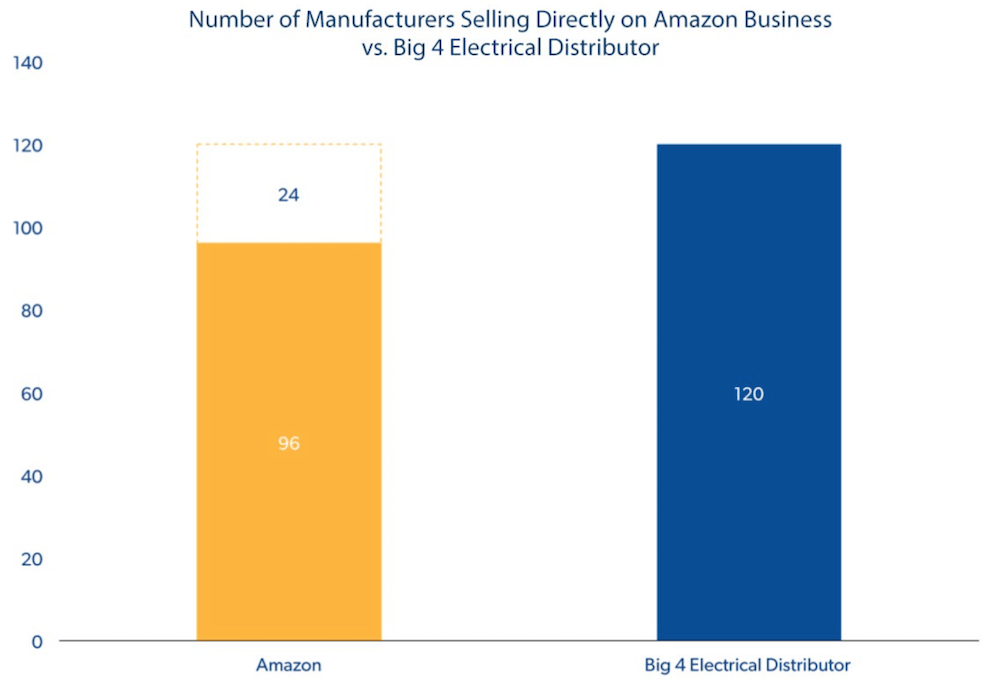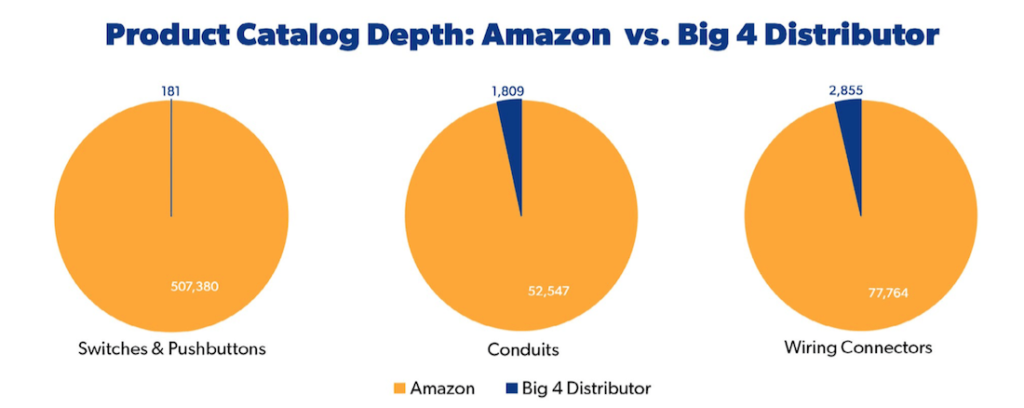BloombergGadfly recently posted an excellent video that succinctly sums up many of the market disruptions, especially to the distribution market, that we discussed on our blog a few weeks ago.
Historically, distributors have been able to compete based on building relationships with B2B buyers and providing the first-class service and offering a complete product catalog with competitive pricing and billing structures. Recent research, however, shows that Amazon’s efforts at disintermediation are growing as more and more manufacturers choose to sell their products on the site as one of their multiple channels to the end consumer:

And, perhaps more troubling is that the same research report suggests that Amazon’s product catalog has already eclipsed that of most distributors:

So, what’s a distributor to do? Differentiate.
In a 2016 interview, Charles E. Redding, Senior Analyst, Equity Research atBB&T Capital Markets regarding how to drive competitive advantage for Industrial Distributors, stated that “we believe many customers (particularly medium/larger-sized customers) are willing to pay a premium for access to technical expertise, product/industry specialization, and multi-channel delivery. Select distributors believe their expansive level of customer specialization, proactive sales penetration, and customer SKU inventory provides them with an edge over more reactive, one-dimensional delivery channels such as Amazon.”
How can distributors differentiate themselves from Amazon? In our recent blog post, we listed 4 ways:
- Examine every step in the customer’s path-to-purchase to identify gaps or weaknesses and fix them. Think about how easy you are to do business with and how easy it is for your customers to purchase. B2B users want to be assisted. Sometimes the seller understands what the buyer needs better than the buyer. Offer subscriptions, financing, and packaging solutions that anticipate their needs.
- Develop strategies for leveraging your existing relationships and deep product expertise. Amazon is not always the lowest cost provider so we must address convenience, ease of shopping, explore traditional B2C eCommerce capabilities (cross-selling, up-selling, search, recommended products, etc) and mobility.
- Leverage your brand authority to educate your prospective customer. Brand loyalty is at an all-time high, and consumers want to buy from you – so long as they receive the information they need to satisfy their buying criteria. Your site should not only delight but also allow the consumer to educate themselves, compare options and easily move from education to commerce.
- Focus on ensuring that your Information Supply Chain provides customers with the content they need to make a buying decision.
Want to read about more ways to compete against Amazon? Download our Industry Brief.

